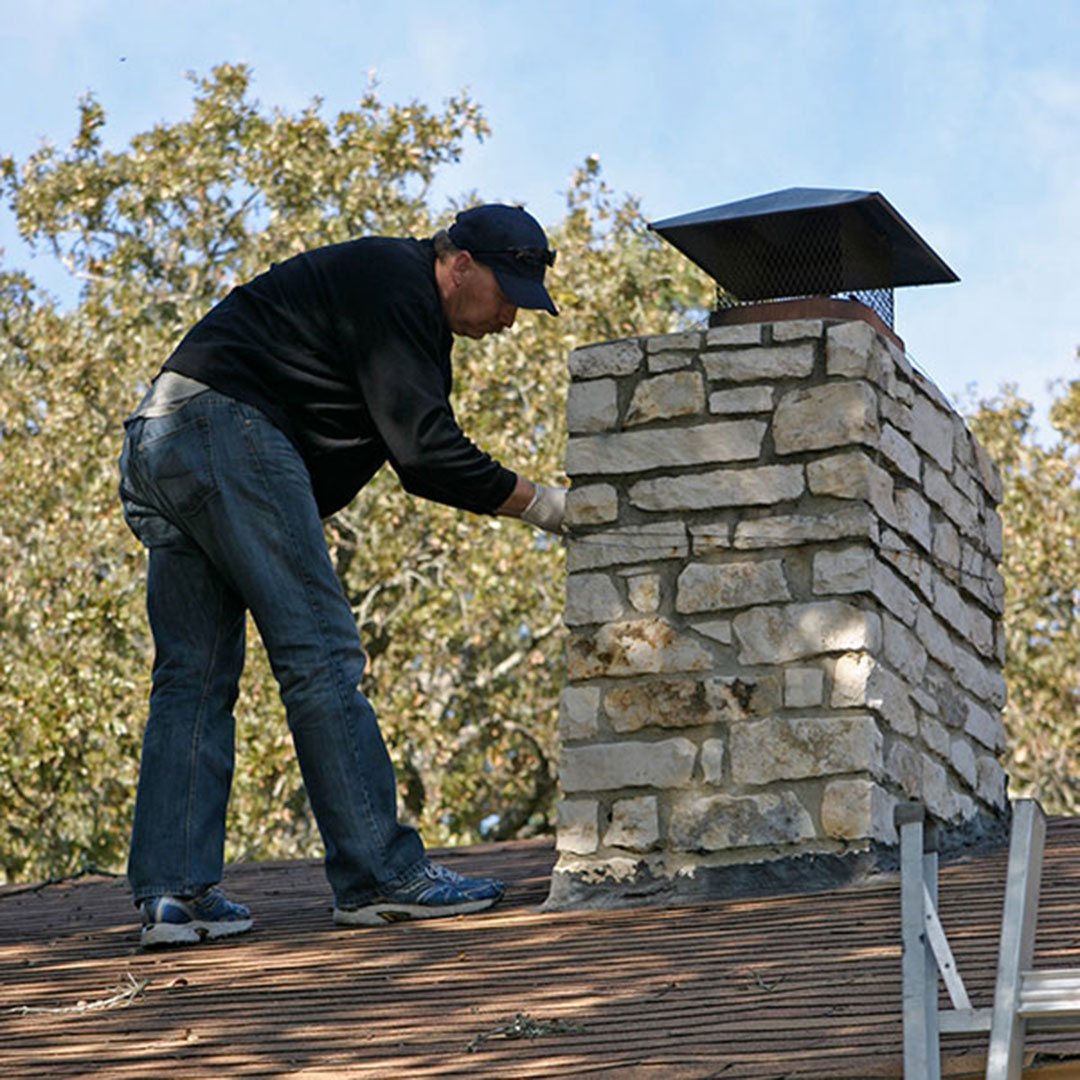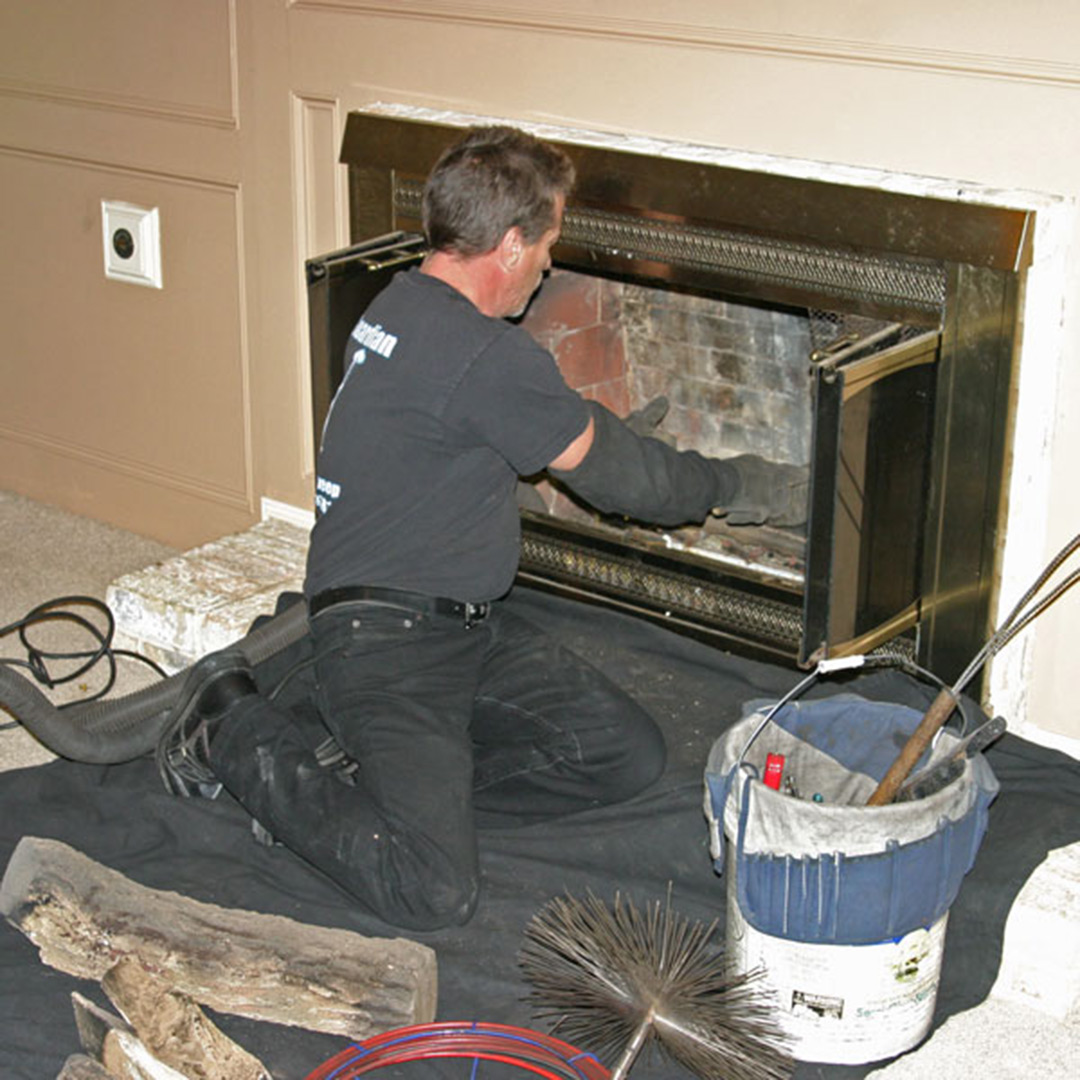Solving the Mystery of Your Smelly Fireplace
The joys of your fireplace in winter may be forgotten if the hearth begins to leak bad smells. Clearing the air by solving the mystery of your smelly fireplace is not a job for amateurs. The potential causes of fireplace odors are numerous. The chimney sweep professionals at Guardian Chimney Sweep are regular sleuth-hounds. They have years of experience sniffing out fireplace smells and doing what it takes for you to breathe easier. The following are among the common causes of fireplace odors and the various fixes.
 Suspect #1 – Creosote
Suspect #1 – Creosote
If you have a wood-burning fireplace, dealing with creosote (Suspect #1) is a fact of life. With every fire, more of the extremely flammable, tar-like substance is added to the lining of your chimney. It causes all sorts of problems, such as creating an increased risk of a hazardous chimney fire. But, to the point, creosote is also the cause of smelly fireplaces everywhere, especially when it has built up layer upon layer.
When an excessive amount of soot and creosote combines with the heat, humidity, and rain in summer, the result is a smelly fireplace every time. The charred or burnt tar smell of creosote has been described as sour and sickly. If you call qualified chimney technicians for creosote removal, your smelly fireplace problem will be resolved. Keep in mind that there are three forms of creosote, and only one type is easily removed with a professional chimney sweeping brush.
Suspects #2-6 – Excess Moisture
When excess moisture is the culprit causing your smelly fireplace, who are you going to call? Chimney pros like those at Guardian can solve this mystery, which could seriously be compared to ghost hunting! When there is no chimney cap (Suspect #2) at the top of your chimney flue, Ghost Buster-level pros are required. The installation of an obviously missing chimney cap is only step one in eliminating odorous fireplace smells. Step two is to determine the extent of possible moisture damage. A partial or full chimney rebuild may be required.
Other causes of excess moisture in the fireplace/chimney system include cracks in the exterior chimney masonry (Suspect #3), chimney crown deterioration (Suspect #4), faulty or damaged chimney flashing (Suspect #5), and deteriorating mortar (Suspect #6). In a suspect line-up, qualified chimney sweeps can identify the root cause of your chimney odors and provide necessary remedies.
Suspect #7 – Negative Air Pressure
There are many potential reasons for negative air pressure (Suspect #7) in a home. What happens is that more air must come into the home, and the fireplace is usually the path with the least resistance. A faulty damper that doesn’t stop airflow in the chimney between the home and the outdoors may be the reason for negative air pressure. The condition allows smelly odors to enter the home. Other contributing factors might be kitchen and bathroom exhaust fans, the dryer exhaust, or the installation of a new furnace.
Chimney experts can provide the solutions needed to stop negative air pressure from resulting in stinky fireplace smells. Many different solutions could stop bad fireplace smells caused by negative air pressure. They will figure it out and offer helpful advice or let you know what the right solution is.

Contact Guardian for Help with a Smelly Fireplace
Guardian Chimney Sweep has certified chimney professionals with detective-like skills. Solving the mystery of your smelly fireplace likely requires expertise, for, as you can see, there are many possible suspects. Contact Guardian for chimney cleaning, chimney crown rebuilds, chimney liner replacement, chimney cap installation, chimney inspections, and any other chimney services you may need. We guarantee our services.
Call us at the phone number below closest to your South Texas home or fill out our online contact form.
- Conroe: (936) 271-9781
- Houston: (713) 401-2011
- Outside Houston Metro Area: (888) 306-6069 (Toll-Free)

 Tap to Call Now
Tap to Call Now